How to plant an apple tree and get a rich harvest
There are dozens of varieties of apple trees, and aromatic, healthy fruits have always been highly valued in Russia. However, what to do if an old apple tree does not yield for a year, or the apples are constantly small and sour? In this case, it is worth using grafting - this is the name of one of the methods of vegetative propagation, which allows you to rejuvenate the tree and achieve a bountiful harvest. How to plant an apple tree?
Content
Vaccination appointment
Grafting is the movement of a cutting or shoot with a bud into a gap made in a tree branch.
This method allows you to combine related plant species: for example, if you graft a branch to an apple tree pear tree, then the same plant will produce both apples and pears every year. However, more often this method is used within the same species to obtain pilaf of the desired variety or for rapid rejuvenation of trees. Any grafting uses a stock - that is, a tree that accepts a young sprout, and a scion - planting material, which is to become a new living and fruitful shoot.
A common type of grafting is transplanting a branch of a “cultivated” variety on a "wild" plant: this allows you to get more tasty and juicy fruits, and grafted shoots usually take root well to wild apple species.
Vaccination can be compared with a surgical operation: it is necessary to violate the integrity of the branch and combine the cambium layer of the stock and scion with each other. It is through it that life-giving juices flow, and thanks to it, one branch will take root to another. There are two main types of such an operation: copulation - petiole grafting, and budding - kidney grafting.
The first method is used more often, since the survival rate of young shoots is higher. Copulation is easier to cope with, but it also requires knowledge of a considerable number of subtleties.
Types of copulation
This is the most common and effective vaccination method used by a wide variety of gardeners.
In turn, it is also divided into several types:
- There is a simple copulation, in which two branches of the same diameter are used. They are cut along an oblique line and pressed against each other as quickly as possible so that the cut does not have time to suffer from oxidation processes. This method is most often grafted to combine 1-2 year old already regrown branches, and you can expect the appearance of fruits next year.
- Improved copulation means more complex type of vaccination, since in this case the branches are not simply cut off, but additional notches are made in them. An uneven cut allows for better and stronger combining of the rootstock with the scion, this provides a greater survival rate of the branch. When vaccinating, you need to ensure that the cambium of both branches is in contact as tightly as possible.
- Split grafting - this is the name of the type of grafting in which branches with different diameters are connected. In this case, an incision is made in the rootstock, into which the scion is inserted. On the lower part of the small cutting, this is cut along an oblique line so that the cambium layers touch. Without this, the branch will not take root, and the vaccine will be useless.
- There is also such a method as grafting for the bark. In this case, a thick branch is cut off, and the bark is pushed back on it.Young shoots with an oblique cut are inserted behind the bark: it is better to use two cuttings located opposite each other. This is a fairly simple way, so novice gardeners can use it.
- The last vaccination option is insertion into the side cut. It is carried out when there is no way to place the stalk behind the bark. A neat cut is made in the side of the branch, and a handle is inserted into it, on which two oblique cuts are made.
Basic rules for vaccination
Like any operation, vaccination requires strict adherence to certain standards. It is necessary to take all measures to protect the cut of the plant from infection and prevent the formation of rot. Neglecting these measures can lead to the death of the plant. Grafting stalk - the scion should be harvested at the beginning of winter or in the earliest spring before the snow melts. At this time, the trees are at rest, and the movement of sap in them slows down as much as possible.
Young annual branches are selected as a scion; their length is about 30-35 cm.
To get the scion, you need to choose the healthiest and most productive trees, the apple variety from which you especially like. Cuttings are cut along an oblique line, and the length of the cut should be at least three times the thickness of the branch itself. Until spring, the cuttings must be placed in the basement or in the refrigerator, their lower parts are covered with a wet cloth or placed in wet sand. This will keep the cut from drying out and ready to be grafted onto another plant.
Vaccination is carried out using a fine garden saw with a special very sharp knife, you will also need a garden pitch and plastic wrap to tie the grafting site.
In work, you need to follow several rules:
- Before vaccination, you should thoroughly wash your hands with laundry soap.
- It is necessary to wash the instruments, it is advisable to disinfect them. Make sure the knife and file are sharp enough to make a neat cut with minimal injury to the tree.
- After combining the rootstock and the scion, the junction is tightly rewound with plastic wrap. The junction and the film should be well bonded with a pitch to prevent the formation of rot.
- Do not tie the junction with electrical tape. It does not allow the plants to take root, so grafting will be useless. Also, do not completely cover the handle with polyethylene. In this case, the buds on it will begin to bloom ahead of time, and the shoot may die.
- When about three weeks have passed, the strapping can be gradually glorified, since the new one with the scion has grown together enough, and soon the buds will begin to bloom on them.
- The graft is placed on the upper side of the rootstock. This guarantees him a reliable support, and the young stalk will not break when the apples begin to ripen on it.
- There is one more trick: to prevent the birds from breaking the branch, it is tied with a bright ribbon that will swing in the wind.
Features of the vaccination
Grafting can be carried out at the very beginning of the spring season, when the juices have not yet begun to move in the plants.
Sometimes it is also carried out in the summer before the appearance of the buds. There should be at least two buds on the petiole, which will quickly give young shoots. Most of apple varieties begins to bear fruit only in the third year after such a transplant. However, the Pepin Saffron or Berkutov variety usually begins to actively bear fruit from the second year, if the grafting was performed correctly. When performing it, you need to pay attention to the careful combination of the rootstock and the scion: if it is incomplete, the cutting will not be able to take root and will quickly disappear. The same goes for dirt or soil getting into the gap between the scion and the stock.
A grafted tree requires special care, as it will require a lot of strength.
Do not forget about watering, fertilizing and mulching the roots. If the grafted stalk began to grow not outward, but inside the crown, it will need to be carefully bent back. Vaccination allows you not to wait many years for the seedling to grow.Using this method, you can get large and aromatic apples already in the second or third year.
More information can be found in the video.




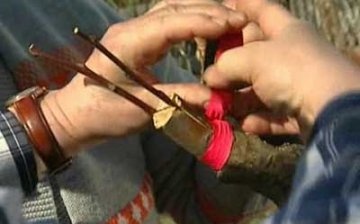
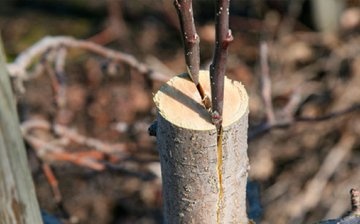
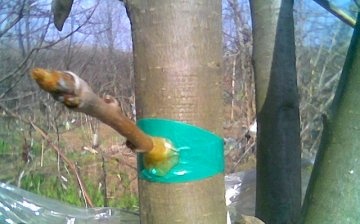
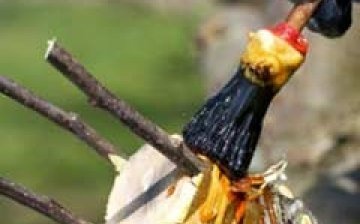





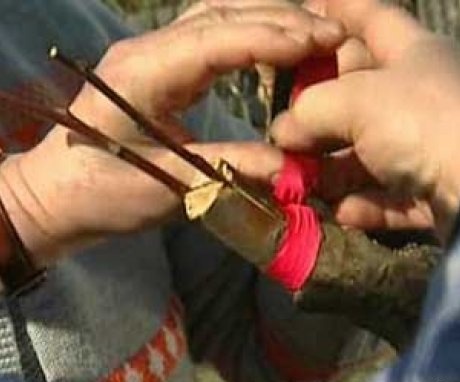
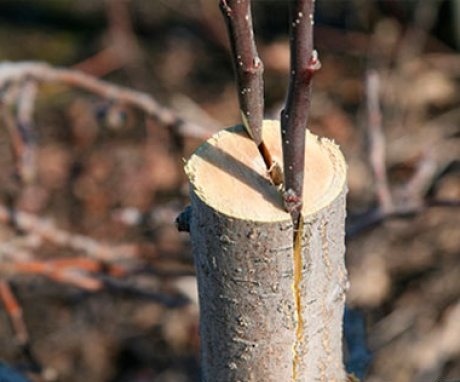
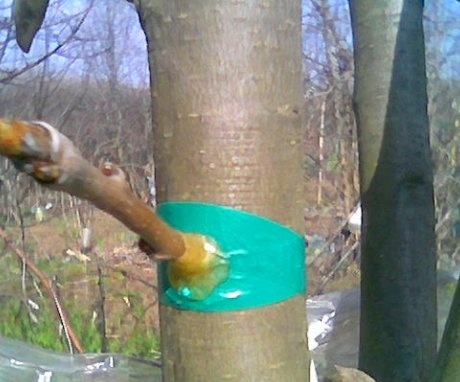
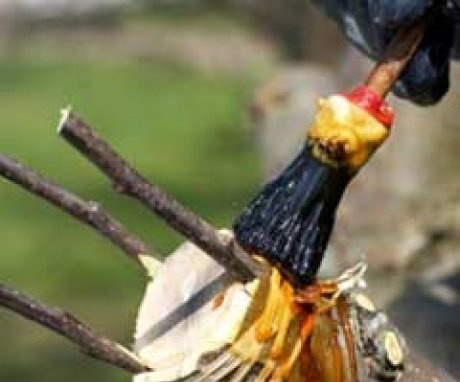
In the article, everything is theoretically correct and clearly written. Thank you! I want to clarify - is it possible for a beginner to vaccinate himself? Or is it still better to consult a specialist?
The same interests, but will I succeed myself, if I am not particularly friends with the garden at all? And I want more of my apples. In any case, now we have an idea of this procedure.
I did not plant the apple tree, I bought it and planted it. Tell me when will it start bearing fruit? She is already 3 years old, she has not yet had a single apple, maybe I am somehow wrongly looking after?
Daria Ionova, as a rule, fruiting begins from the age of five years of the tree, but this may also depend on the care of the tree, and on the type or growing conditions, the main thing is patience!